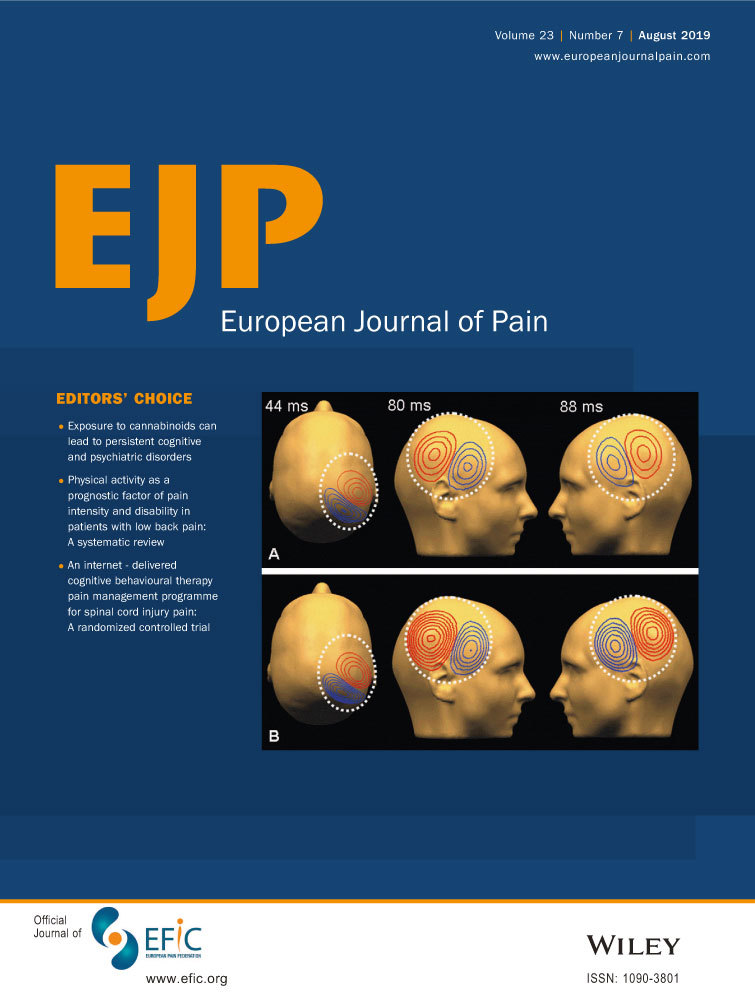Implementation of Patient-Reported Outcomes (PROMs) from specialist pain clinics in England and Wales: Experience from a nationwide study
Funding information
To collect PROMs data for the National Pain Audit provided by the Health Quality Improvement Partnership.
Abstract
Introduction
Evaluating outcomes in routine clinical practice is a significant challenge for specialist pain clinics due to the complexity of interventions provided and the subjective nature of pain. This study reports findings from implementation of Patient Reported Outcomes (PROMs) in pain clinics in England and Wales between 2011 and 2013.
Methods
A paper-based questionnaire was administered at a first appointment in participating centres. This assessed quality of life, experience of health care and health care usage with postal follow-up at 6 and 12 months by the research team. Feasibility was assessed in terms of response rates, completion rates and outcomes.
Results
Ninety-one (56%) clinics participated, entering 9,588 patients (19% of those eligible). For responders, there was a 92% item completion rate. The dropout rate was high, 46% and 19% returned questions at 6 and 12 months, respectively. Quality of life at baseline was low, with a mean EQ5D-3L Time Trade Off value of 0.32. Amongst responders at 12 months, 92% continued to experience significant pain. For those with planned discharges 30% achieved the Minimal Important Change for quality of life. Nonetheless, 70% reported positive experiences of care.
Conclusions
Patients attending UK pain clinics report an extraordinarily poor quality of life and difficulty with understanding their condition. Problems with PROMs implementation included initial recruitment, follow-up response rates, classification systems and benchmarking. Successful implementation should include use of electronic data capture, feedback and focus on gradual improvement. To achieve this would require extended periods of funding.
Significance
No nationwide evaluation of the effectiveness of specialist pain clinics had previously been attempted. Comparison of patient outcomes from services enables improvement. This work provides a platform to improve methods of routine PROMs capture in pain clinics, measure clinical effectiveness and identify areas for potential research.
CONFLICTS OF INTEREST
The authors declare no conflicts of interest.




